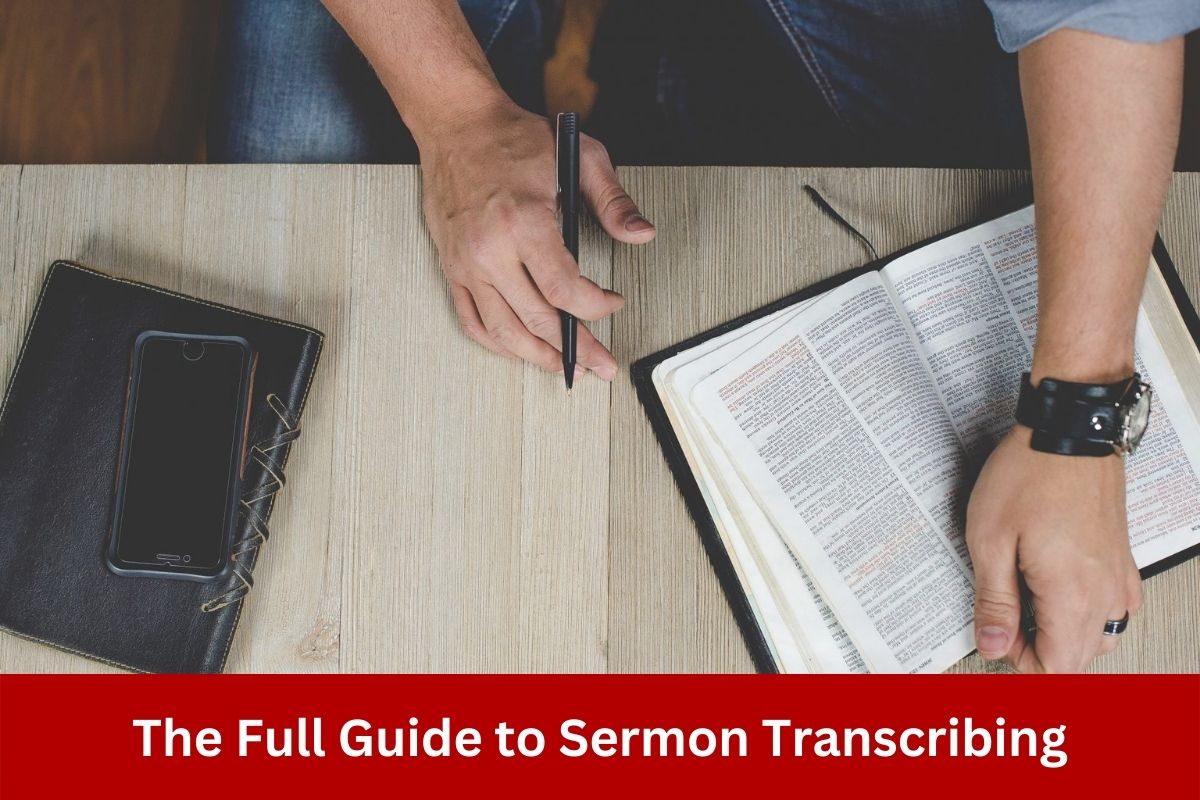As a pastor, one of your main responsibilities is to deliver weekly sermons that inspire and educate your congregation. In order to do this effectively, you need to be able to communicate your thoughts clearly and concisely.
This can be a challenge, especially when you’re trying to remember everything you want to say while also keeping an eye on the clock.
One way to make sure your sermons are always on point is to transcribe them. This may seem like a tedious and time-consuming task, but it’s actually quite simple once you get the hang of it. Plus, it will give you a written record of your thoughts that you can refer back to later.
If you’re not sure how to get started, don’t worry. This guide will teach you everything you need to know about sermon transcribing, including how to format your text, what software to use, and how to make the process as efficient as possible.
What is Sermon Transcribing?
Sermon transcribing is the process of converting a spoken sermon into a written format. This can be helpful for a number of reasons.
For one, it gives you a way to review your sermons and make sure they’re as effective as possible. It also allows you to share your sermons with people who couldn’t make it to the service, or who prefer to read instead of listening.
Plus, sermon transcription can be a good way to create blog posts or articles based on your talks. This can help you reach a wider audience and have a greater impact on the world.
How to Transcribe a Sermon?
There are a few different ways to transcribe a sermon. The most important thing is to find a method that works for you and that you’re comfortable with.
#1 Speech-to-text Program
One option is to use a speech-to-text program. This software converts your spoken words into text on a computer screen, which you can then edit and format as needed. The downside of this method is that it can be difficult to get the software to recognize your voice, and the transcript may not be completely accurate.
#2 Transcribe the Sermon Yourself
Another option is to transcribe the sermon yourself. This can be a slower process, but it gives you more control over the final product. Plus, it can be a good way to review the sermon and make sure you didn’t miss anything important.
If you decide to transcribe the sermon yourself, there are a few things you’ll need to do. First, find a quiet place to work where you won’t be interrupted. Then, get a pen and paper, or open a blank document on your computer.
Start by writing down the date and location of the service, as well as the title of the sermon. Then, start transcribing what was said. Try to be as accurate as possible, but don’t worry if you miss a few words here and there. You can always go back and listen to the recording again if you need to.
Once you’re finished, read over the transcript to make sure it makes sense. Then, edit it as needed for clarity and grammar. You may also want to add any thoughts or reflections you have about the sermon.
When you’re finished, save the document or print it out so you can refer back to it later. You may also want to share it with your congregation, either online or in print.
Remember, if you are preparing for a virtual sermon, try to facilitate the audience and use a variety of tools designed for virtual meetings in order to improve listening and the potential of the sermon.
How to Format a Sermon Transcript
There’s no one right way to format a sermon transcript. The most important thing is to make sure the text is easy to read and understand.
One option is to create a basic outline of the sermon, with the main points listed in bullet form. Then, fill in the details beneath each point. This can be helpful if you want to refer back to the sermon later or share it with someone who didn’t hear it.
Another option is to format the transcript like a blog post or article. Start with a catchy headline, then write a brief introduction.
Next, transcribe the sermon itself, followed by a conclusion and any thoughts or reflections you have. You can also add links to related resources or further reading.
If you’re not sure how to format your transcript, take a look at some examples online. You can also ask your congregation for their input on what would be most helpful for them.
Final Words
There are many benefits to transcribing your sermons. It’s a good way to review the content and make sure it’s as effective as possible.
It also allows you to share your sermons with people who couldn’t make it to the service, or who prefer to read instead of listening.
Plus, sermon transcription can be a good marketing tool to attract new members to your congregation.



